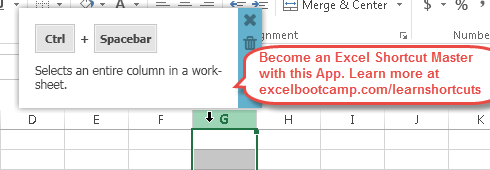5 Ways to Select Columns in Excel Easily

The task of selecting columns in Microsoft Excel is foundational to effective data management, from data entry, analysis, to reporting. While Excel is inherently user-friendly, mastering some of its lesser-known functionalities can significantly boost your productivity. In this guide, we delve into five effective ways to select columns in Excel, ensuring that you can perform this basic yet vital task with ease and precision.
1. Using the Mouse

The simplest method to select columns is by using your mouse:
- Click on the column header (the grey cell labeled with a letter at the top) to select an entire column.
- To select multiple adjacent columns, click and drag across the column headers.
- For non-adjacent columns, hold down the Ctrl key (or Command on a Mac) and click on each column header you need.
2. Using Keyboard Shortcuts

Excel also supports various keyboard shortcuts for column selection, making the process faster:
- Ctrl + Space (Control + Spacebar for some layouts) selects the entire column where the cursor is located.
- Shift + Space selects the entire row, but you can immediately follow with Ctrl + Space to select the column instead.
- To extend the selection, hold Shift and use the left or right arrow keys.
3. Using the Name Box

The Name Box, located next to the formula bar, offers a direct method to select columns:
- Click in the Name Box, type the range (e.g., A:A for column A), and press Enter to select that column.
- You can also type ranges like A:C for multiple columns.
📌 Note: This method is especially useful when you need to quickly select non-adjacent columns or columns far apart from each other.
4. Using Formulas

Although typically used for calculations, formulas can also be leveraged for selecting columns:
- Enter
=ADDRESS(ROW(),COLUMN())in a cell, and you'll get the reference of the current cell. Modify this formula to return column references, allowing for dynamic column selection. =COLUMN(A1)will return 1, as A is the first column. You can extend this approach to select multiple columns using functions likeOFFSET.
5. Using VBA Macros

For users comfortable with macros, VBA (Visual Basic for Applications) provides a powerful way to automate column selection:
- Open the VBA Editor by pressing Alt + F11 or navigating to Developer Tab > Visual Basic.
- Create a new module and write a macro to select columns. For example:
Sub SelectColumn()
Columns("A").Select
End Sub
- This basic example selects column A. More complex macros can be written to select multiple columns or meet specific criteria.
The above methods show the flexibility of Excel in handling column selection. Each approach has its own advantages, tailored to different scenarios:
- The mouse method is straightforward but becomes less efficient with large datasets.
- Keyboard shortcuts offer speed and are invaluable when working with multiple columns simultaneously.
- The Name Box is excellent for quick, precise selections.
- Formulas provide dynamic ways to select columns based on data changes, enhancing automation in data handling.
- VBA macros open up limitless possibilities for tailored column selections, especially useful in routine tasks.
Understanding these techniques empowers users to work with Excel more efficiently. Whether you're dealing with vast datasets, need to quickly reference multiple non-adjacent columns, or automate repetitive tasks, Excel has a method to suit your needs. Practice with these methods, and you'll find yourself navigating and manipulating data with newfound ease.
Why can’t I select columns with my mouse?

+
Ensure your Excel version isn’t in a read-only or protected mode, which might disable certain mouse functions. Also, try zooming out for better visibility of headers.
How do I select columns using only the keyboard?

+
You can use the combination of Ctrl + Space to select the column where the cursor is located. To extend the selection, press Shift and the arrow keys left or right.
Can I automate column selection with macros?

+
Yes, using VBA, you can write macros to automate the selection of columns based on specific criteria or to execute repetitive selection tasks.